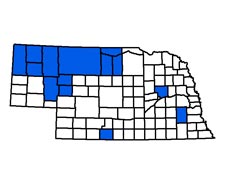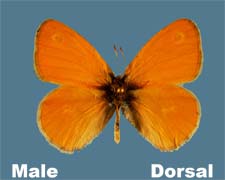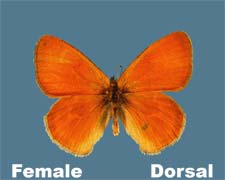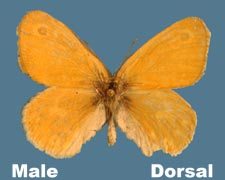
'Inornate' Common Ringlet 'Ochre' Common Ringlet |
 |
| Coenonympha tullia inornata (W.H. Edwards, 1882) Coenonympha tullia ochracea (W.H. Edwards, 1861) |
| Status: Subspecies ochracea can be locally common, while inornata is generally rare. Both subspecies are residents in the state. |
| Flight Period(s): There is a single flight, which in Nebraska has been recorded from 26 May – 25 June. A parital second brood flying in August has been reported in South Dakota (Marrone, 2002), but has not yet been reported for Nebraska. |
| Range: Various subspecies of tullia occupy the western half of North America, extending east across southern Canada and the northern United States to the Atlantic seaboard. Subspecies ochracea inhabits the northern and central Rocky Mountains and can be found in the Pine Ridge region of Nebraska. Subspecies inornata is found in most of the eastern U. S. and southern Canada, and is represented in Nebraska by populations along the Niobrara River in northern Nebraska and in the western sand hills, as well as scattered records from eastern and southern portions of the state. |
| Larval Hostplant(s): Larvae feed on various grasses including Poa, Stipa, Festuca and Agrostis species |
| Overwinter: As young larvae |
| Commentary/Habitat: Lone individuals are found on grassy hillsides, but when found in any numbers it is usually in association with lush areas along streamsides and canyon bottoms. Some authorities would consider prairie specimens from our area to be subspecies benjamini (a high plains resident ranging from south central Canada south into the Dakotas) rather than inornata. This is one of the few northern butterflies reaching its southern limits in Nebraska. While the prairie residents are rare in Nebraska, Marrone (2002) reports it to be often abundant in native prairies in South Dakota. |
| Similar Species: None |


